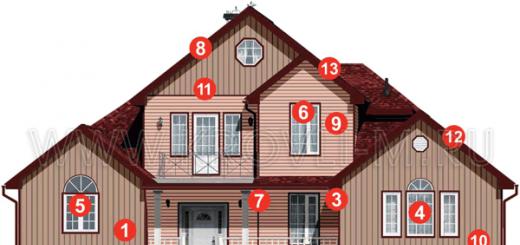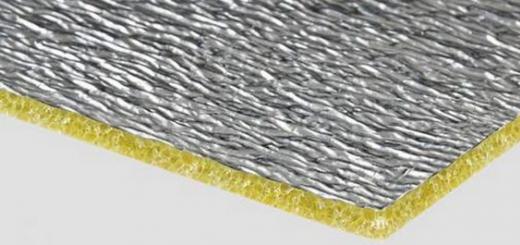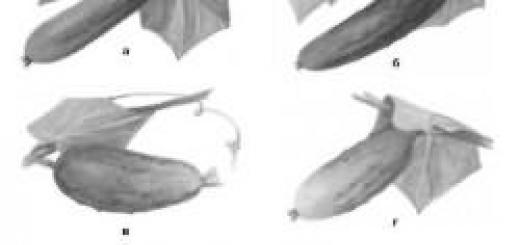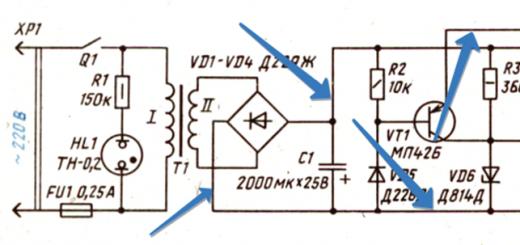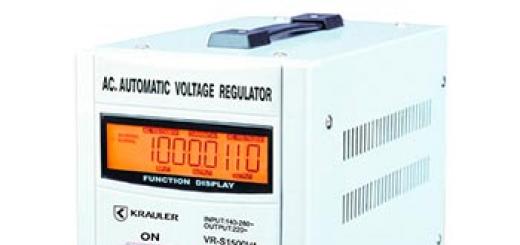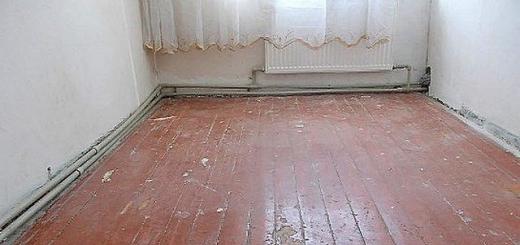It is difficult to call living comfortable without a properly functioning sewage system, which is a wastewater removal system. City apartments are connected to it centrally, and owners of private houses and summer cottages quite often equip it with their own hands.
It is often most rational to use available materials for your own design. In this case, the simplest and most affordable option for arranging a septic tank is to use old tires. Used tires can be purchased for a minimal price, which will be determined practically by the cost of delivery.
Sewerage in a private house is needed no less than in an apartmentBig advantages and small disadvantages of tire sewerage
The idea of arranging a septic tank from tires has a number of undoubted advantages. You can make a sewer well yourself, without hiring hired workers or paying for their labor. You can easily find the tires at your nearest tire shop. In this case, the presence of serious tools and mechanization equipment is not required (unlike the installation of a factory-made septic tank).
The disadvantage of this design can be considered its small capacity, which requires the use of the sewer system by a family of no more than three people. In addition, the low tightness of a tire septic tank poses a risk of environmental pollution.
To avoid such a nuisance, it is necessary to periodically carry out preventive inspections and sealing of joints and connections. An alternative option is to make a sewer from barrels in accordance with the description  Practical use of old tires
Practical use of old tires
Determining the best place for a cesspool on the site
When choosing the location of the cesspool on the site, you must maintain the required distance from the water source, your own home and neighboring buildings. The best place for arranging a waste pit is determined by the following requirements:
- to prevent the foundation from being washed away, the minimum distance to the house should be from eight to ten meters;
- from the water-bearing source, the cesspool should be located at a distance of thirty to fifty meters with sandy soil, if the soil is clayey, the distance can be reduced to twenty-five meters;
- fruit trees must be separated at a distance of at least five meters;
- garden plants - two or more meters;
- groundwater can be no closer than five meters to the surface;
- the soil should not freeze too much in winter.
It should be taken into account that a cesspool should not be located too far from housing. In this case, the volume and cost of the work increases significantly, since it will be necessary to lay a long section of the pipeline system and equip it with inspection hatches. In addition, the risk of blockages increases. At the dacha, a septic tank is also equipped for a bathhouse.
 Permissible distances for placing a cesspool
Permissible distances for placing a cesspool Choosing a sewerage design option from tires
When choosing a tire sewer design option, you should take into account the volume of wastewater released. If pumping out and removing waste seems feasible, you can install a sealed drain pit. Otherwise, you should dig a simple well and provide wastewater filtration in it. Of course, this option should suit the local administration in terms of its environmental characteristics. A more complex and practical design of a filter system with a settling tank made from car tires is also possible.
The simplest drain pit
The simplest and least financially expensive method of constructing a septic tank with your own hands is to install a sealed drainage pit. In this case, you need to dig a hole, seal its bottom and lay the tires, ensuring that their connections are impenetrable to wastewater.
 Diagram of a tire cesspool
Diagram of a tire cesspool The result is a waste storage tank, the capacity of which directly depends on the diameter of the wheels and the depth of the pit. The drainage from the sealed drainage pit must be pumped out regularly, otherwise it will overflow. Simplicity of design and lack of soil contamination are its main advantages.
Well with filtration
The operating principle of a simple well with filtration is not particularly complicated. Solid insoluble fractions of wastewater entering it do not penetrate into the ground and are deposited on a layer of gravel or crushed stone.
 Construction of a septic tank with filtration from tires
Construction of a septic tank with filtration from tires Liquid fractions of wastewater are filtered in the drainage layer and go into the ground. The disadvantage of this option is the formation of silt sediment at the bottom of the well. Over time, it makes it difficult for liquid to pass into the drainage, and then complete cleaning of the pit and replacement of the gravel or crushed stone backfill is required.
Tire septic tank with drainage pipe
The presence of a drainage pipe does not increase the functionality of a tire septic tank. Holes are drilled in the pipe and it is placed in the center of the well, descending below its bottom.
 Diagram of a septic tank made of tires with a drainage pipe
Diagram of a septic tank made of tires with a drainage pipe The purpose of this structural element is to drain filtered wastewater into the ground, bypassing the bottom of the well clogged with silt deposits. In practice, it turns out that the pipe gets clogged with them quite quickly, in any case, they don’t work effectively for too long.
Construction made from car tires with a filter system
The design of a car tire sedimentation tank with a filter system is somewhat more complex, but this modification has a longer service life. In this case, two containers are used, one of which is intended for settling fecal water, and the other for filtering it before entering the soil. The working scheme is as follows:
- solid large fractions of wastewater, entering the sump, settle at its bottom;
- liquid fractions flow through the overflow pipe into the filter container;
- After cleaning in the drainage layer, the liquid goes into the soil, leaving light fractions of contaminants at the bottom of the well.
 Tire septic tank with settling tank and filtration
Tire septic tank with settling tank and filtration Such a system is the most environmentally friendly and economically beneficial. The container of this design fills much more slowly, so pumping out waste products can be done much less frequently, only when it is overfilled.
How to make a septic tank with a sump and a filter well with your own hands
You can make a septic tank with a storage tank and a filter well with your own hands. You need to stock up on sewer pipes and tires, for example, from the Kirovets tractor. Please note that it is quite difficult to move tires of larger diameter on your own. In addition, you will need tools in accordance with the illustration.
Polypropylene sewer pipes can be cut with a sharp knife. It is better to seal butt joints and pipe entry points with a bitumen compound; its structure is most compatible with the material from which car tires are made.
We will calculate the volume of the septic tank, the required number of tires and other materials
The volume of the septic tank is determined by the diameter of the tires used in its manufacture and the depth of the shaft. Usually it is about three meters. Dividing this value by the width of the tire tread, we get the number of tires required for work. Seven tires from a Kirovets tractor and two from a Kamaz truck are usually enough.
 Big tire is a big cesspool
Big tire is a big cesspool Depending on the distance of the septic tank from the house, the number of sewer pipes needed for its arrangement is determined. Dividing the distance to housing by the maximum length of the pipe, which is three meters, we get the required figure. Another pipe will be required between the containers; in addition, it is necessary to provide a supply of material in case it is damaged during the work.
To install a drainage layer, up to two tons of crushed stone or gravel will be required. It is more convenient to backfill a pit with tires with sand. The tires are fastened together with clamps or binding wire. Connecting two tires requires about five clamps or two meters of wire. To perform waterproofing, you will need a roll of roofing material and a sheet of rubber with an area of approximately one square meter in accordance with the size of the tire.
We dig a trench from the house to the sump
When digging a trench, it is necessary to provide the correct slope of the sewer pipes for the smooth removal of wastewater under the influence of gravitational forces. Read about this in the article There should be no significant protrusions or irregularities on the bottom and walls; they are carefully leveled and compacted.
 Sewer line from house to cesspool
Sewer line from house to cesspool The width of the trench is selected so that it does not interfere with the joining and laying of the pipeline system. A shock-absorbing cushion is installed at the bottom, which is a layer of sand; in addition, it allows you to maintain the correct angle of inclination of the sewer pipes.
The biggest job is preparing the pit
The most labor-intensive part of the work is preparing the pit for the treatment plant. Once you reach a depth of about one and a half meters, it becomes difficult to throw the soil out of the hole, so you should use a bucket on a rope to excavate the soil. The top fertile layer of soil can be poured onto the garden.
You should not dig deeper than three meters, as problems may arise in the future when pumping wastewater from such a well.
The dug shaft should be cleared of tree roots using an ax. As they grow, they can damage the structural elements of the septic tank. The lower part of the pit is carefully leveled to ensure a good fit of the waterproofing rubber layer to the bottom tire.  Pit pits for settling tank and filter well
Pit pits for settling tank and filter well
The bottom of the filter well is further deepened to the thickness of the drainage layer, which is 60-100 cm in accordance with the dimensions of the lower tire. It also needs to be leveled, since the surface will be covered with crushed stone or gravel with sand.
The work area must be fenced to prevent accidents, especially if children live in the house.
We put tires in a settling tank and a filter well
Before putting the tires in place, it is better to cut out about one-third of the inside of the sidewall. This will significantly increase the internal diameter of the well and make it easier to clean in the future. This is especially important for the sump, which will definitely have to be cleaned.
In the storage container, the first tire is placed on the bottom covered with a sheet of rubber or roofing felt. All joints are thoroughly coated with bitumen. The second tire is connected to the first with clamps or binding wire. The joints are also sealed with bitumen. Subsequent tires are laid in a similar way; a hole is cut in one of them for the entrance of the sewer drain pipe extended from the house.
 The filter well is ready
The filter well is ready In the filter well, crushed stone drainage is first filled in, and then the first tire is laid. Each subsequent tire is fastened to the previous one with clamps or binding wire, the joints of the joints are coated with resin. Then backfilling is performed. The soil around the tires is compacted and compacted. It is more convenient to backfill with sand, as it will not shrink.
We carry out sewerage from the house to the septic tank
When installing sewer systems, it is necessary to maintain the angle of inclination of drain pipes recommended by building codes and regulations. It should be understood that waste removal occurs under the influence of gravitational forces and if the angle of inclination is too small, large fractions will get stuck and create a blockage in the pipe. The same will happen if the angle of inclination is too large, in which case the fast flow of wastewater will throw large fragments towards the inner walls, and they will clog the drain.
We install an overflow pipe from the septic tank into the sump
To install an overflow pipe connecting both containers, holes of the appropriate cross-section are cut in the tires using a grinder. The overflow pipe should be located below the level of the wastewater disposal pipe leaving the house.
 The sewer pipe is placed in a sump
The sewer pipe is placed in a sump In addition, the height of the holes is selected so that the pipe has a slight slope towards the filter well. The joint is sealed with roofing felt patches coated with bitumen resin.
We install covers and provide ventilation
Covers must be installed on the filter well and septic tank. If you want to make them attractive, read the article. To prevent the occurrence of unpleasant odors, a ventilation device is provided. It is most convenient to place its pipe in the lid of the filter well or on the transition pipe between two containers.
 Interesting ideas for constructing a cesspool lid and ventilation
Interesting ideas for constructing a cesspool lid and ventilation The section of pipeline running from the exit of the house to the septic tank is also suitable for arranging ventilation. You can read about the rules for arranging ventilation in the article
A septic tank, or settling tank, is intended for collecting and treating wastewater from a private residential building, cottage, etc. The operation of a septic tank is based on gravitational settling and wastewater treatment using bioenzyme preparations, biofilters or bioloading. This tank consists of two or three wells.
A septic tank made from tires is as easy as shelling pearsThere are concrete rings for organizing septic tanks. But, as popular wisdom says, the need for invention is cunning. People's ingenuity came up with a way to benefit the business. From this article you will learn how to create a septic tank with your own hands with walls made from old tires. It is advisable that the tires be of the same diameter. The remaining tire parameters are not particularly important.
Where and how will the septic tank be located?
It is important that the tire septic tank is located on the site taking into account the factors prescribed by sanitary and technical standards:
- As far as possible from sources of drinking water - from a well, drainage system, inspection wells. This distance is determined to be 25-30 meters.
- Place the sewer well at a distance of at least 5 meters from the buried foundation of a residential building
- It is important that the septic tank is located at a distance of no more than 3 meters from the road, so that a sewage truck can drive up to it, and pumping out the containers does not create problems.
When digging a trench for a sewer pipe, it is desirable that there are as few turns as possible; blockages will form in them. Dig a trench with a slope towards the septic tank, at a rate of 2-5 cm per meter of pipeline length, so that the sewage on the slope moves more easily through the pipe.
How to calculate the size of a tire septic tank?
Before digging a sewer well with your own hands, create a design for it. Calculate the number of tires, the dimensions of the pit, and the length of the pipeline.
The size of the septic tank depends on the number of family members living in the house, on the purpose of the house - on whether you live in it permanently or come only on weekends. For permanent residence, assume 600 liters per person. This means that for an average family of 4 people, a tire sewer with a capacity of 2,400-2,500 liters will be required, divided into 2 wells.
If your family is expected to grow in the next 5-7 years, for example, one of the young people will start a family, or elderly parents will move in with you, lay down a supply in advance and make a septic tank for 3 thousand liters from 3 wells. Calculate how many tires are needed for this job.
Let's take ZIL-130 car tires for calculation. The outer diameter of the wheel is 1 meter, width 25 cm. It is more convenient to make calculations in decimeters, since 1 sq. dm corresponds to 1 liter. We'll have to remember what we taught at school. The tire represents will be calculated using the cylinder formula V-πR 2 H, where
R 2 - radius squared,
H - tire height.
V—volume.
Substitute the numerical values 3.14 x 5 2 x 2.5, we get 196.35 liters. To simplify the calculation, we round to 190, especially since the calculations were made on the outside of the tire. This means that 2500 liters will require 14 tires. The second well will be deeper, and the tires will be distributed not 7 and 7, but 6 and 8. 7 and 8 are possible. There will be no extra.
to make such a septic tank you don’t need any special knowledgeYou may have tires from other equipment at your disposal - tractor tires or car tires. It does not matter. The calculation is made using the formula described above.
To ensure that the tires fit freely and without interference in the well, add 10 cm to the diameter of the tires. We calculate the depth of the well by summing the height of all tires 6x25cm = 150, or 1.5 meters. To this depth add 40 cm for a concrete base and a filter bed of sand and gravel.
If you plan to make 3 wells, you will need 16-17 tires. Two wells are made the same in depth, and the 3rd is larger and deeper. When making a septic tank for 2-3 wells, you can dig 1 pit, ensuring a distance between the wells of 20-30 cm, or you can do it as in the picture.
Now that all the calculations have been made, begin practical work.
Pit and trench for wells
Mark the contours of the pit for future tire sewerage. With a width of 110 cm, its length will be
- for 2 wells - 240-250cm,
- by three - about 4 meters.
The depth in the pit is not the same everywhere. And must correspond to the total height of the tires + 40 cm on a concrete base and gravel. The concrete base is not poured under the latest tire structure. First dig a pit based on the depth of the first (or first two) wells. First add sand and a layer of gravel on top.
Please note: do not equip the site where the last well will be installed yet. This area will continue to be deepened.
On top of a 10 cm thick gravel-sand filter. While the concrete hardens, prepare the tires. You need to trim the tire rim. This can easily be done using a jigsaw with a metal blade. The hole for the blade is drilled with an 8 mm drill. On the first and last tires, cut off only one rim; there should be 4 such tires for a two-chamber septic tank, and 6 for a three-chamber septic tank. On intermediate tires, trim the rim on both sides.
In those tires into which the pipes will go, cut round holes for them. Keep in mind that the pipe must be sloped. Therefore, on the tire of the first well, the hole for the pipe is located higher than on the tire for the second, and for the next transition, also cut holes to maintain the slope of the adapter.
Important. Cut the holes for the pipes according to its size so that the pipe fits tightly. Then the tightness will be higher and less sealing agents will be required.
When the concrete has hardened, you can begin installing the septic tank. All the dirt gets into the first well. Therefore, having inserted pipes into it, it is advisable to seal these holes, as well as the joints between the tires, with sealant.
Place the first tire with the uncut side down; the last tire, on the contrary, should have the uncut side up.
Wrap the mounted well with roofing felt so that nothing leaks out from the spaces between the joints of the tires. The more airtight the septic tank, the less problems it will create.
WATCH THE VIDEO
Deepen the site for the last well. An additional 1-2 tires should fit into it, plus a 15-20 cm layer of sand and the same amount of crushed stone should be poured under the tire well as a drainage filter.
All that remains is to fill the septic tank in the corners and edges and prepare for it. And the tire septic tank is ready.
Many summer residents, arriving at their site, stay there overnight or spend the entire vacation caring for their garden. And the presence of an autonomous sewage system makes their life much easier, bringing them at least to some extent closer to urban conditions.
Making a sewer system from tires is not difficult and requires virtually no financial costs, while installing a modern sewer system is expensive.
Old car tires can be a good budget option for constructing a small septic tank or cesspool if the volume of wastewater is small, which happens when people live at the dacha non-permanently. In addition, the installation of sewerage from tires does not require special knowledge and skills in construction.
Advantages of a septic tank made from tires and its disadvantages
The most important advantage of such a septic tank is:

- almost zero cost, unlike other types of septic tanks;
- Tires from any vehicle can be used;
- Easy installation that can be done by one person.
The disadvantages of a septic tank made from tires include:
- the fragility of such a structure, no more than 10-15 years; unreliable sealing due to the mobility of tires;
- the appearance of unpleasant odors, which can only be eliminated by installing a drain pipe;
- Repair of such a septic tank is almost never carried out, as well as dismantling, due to its uselessness.
|
|
How to dig a sewer

First of all, you need to find out at what level the groundwater is located in your area. To do this, near the house, at a distance of about one meter, you should dig a hole 1.5 m deep. If no puddles of water have formed at the bottom, you can safely begin building an autonomous sewer system.
You can buy old car tires at any car service center. It is better to choose larger diameter tires from tractors or heavy-duty vehicles. In this case, the volume of your septic tank will increase. The number of tires is calculated based on the depth of soil freezing in your area. It is necessary that the depth of the pit for sewage from car tires be below the freezing level of the soil. This is done if you plan to use your septic tank in the winter, even periodically.
Secondly, after the car tires are already on your site, you need to choose a place for the future septic tank.
Remember that it should be located no closer than 25-30 meters from sources of drinking water - wells, boreholes, as well as from a river, lake or pond.
The location of a cesspool or septic tank made from tires, however, like any other, is influenced by the direction of the winds in your area. It is necessary to locate the septic tank in the direction from which the unpleasant odor will not be carried by the wind into the living space.
 Having chosen a place, they decide how to dig the sewer - manually or hire a small excavator. It's all about time and the presence of men's hands. You can dig by hand, but it will take longer than digging a hole with an excavator. And hiring equipment will require some financial investment. The choice is, of course, yours.
Having chosen a place, they decide how to dig the sewer - manually or hire a small excavator. It's all about time and the presence of men's hands. You can dig by hand, but it will take longer than digging a hole with an excavator. And hiring equipment will require some financial investment. The choice is, of course, yours.
When the hole is dug, several holes are drilled in its bottom with a garden drill, into which two perforated special pipes up to 4 meters long are inserted.
This is explained by the fact that water from the septic tank will go into the soil, where it self-purifies.
The bottom of the pit is cleaned, giving it a flat surface, and a layer of gravel or crushed stone 15-20 cm high is poured. Pipes inserted into the drilled holes should protrude 60-70 cm above the level of the bottom of the pit, and their top should be covered with polypropylene mesh so that solid sewage waste did not enter the pipes.
Before laying tires, you need to trim all the edges that are turned inward so that solid fecal waste does not accumulate in these places. Trimming tires can be done using a hacksaw or jigsaw.
Towards the dug hole, you still need to dig a trench into which the sewer pipe will be laid, leading from the country house from the plumbing fixtures - sink, toilet, shower or bathtub. The trench must be dug while respecting the slope from the house to the septic tank. The slope should be such that wastewater can flow by gravity into the septic tank.
This is followed by the installation of sewerage from car tires. The cut tires are stacked on top of each other, after laying liquid sealant between them.
The top tire should protrude somewhat from the surface of the soil.

The space between the walls of the pit and the tires is backfilled after the sealant has hardened. The excess soil remaining after backfilling can be used for other needs.
When backfilling, you can put coarse gravel between the car tires and the walls of the pit, which will prevent the soil from silting and become an extra outlet for wastewater through the cracks that invariably form between the tires, no matter how they are sealed.
The top car tire is covered with a cover made of polypropylene, metal sheet or other material resistant to moisture and temperature changes.
To get rid of the unpleasant odor, the septic tank is equipped with a fan exhaust pipe, which should rise above the septic tank.
The length of the hood depends on:
- places where the septic tank is located,
- prevailing winds in a given area.
The closer the septic tank is to a residential building, the higher the exhaust pipe should be.
The top of the septic tank can be decorated with ground cover plants; their growth does not require a lot of soil; they can grow practically on stones. And you can lift the lid to check the level of the sewer directly with the plants.
Equipping your home with all the benefits of civilization is the main task of a good owner. Fortunately, now there is every opportunity to supply electricity to a residential building and organize a water supply. But centralized sewerage is not available everywhere. If you have enough funds, you can purchase a ready-made factory septic tank or build it, for example, from concrete rings. In cases where finances are not going very well, folk craftsmen come to the rescue and come up with the idea of making a septic tank from tires with their own hands. This is a very good idea, but only suitable for a house with a small number of residents.
What is the difference between a septic tank and a cesspool?
To people who are not particularly knowledgeable, it may seem that a cesspool and a septic tank are different names for the same sewerage structure. This is fundamentally wrong. A septic tank, unlike a cesspool, is a more modern and modernized type of sewage system.
It consists of two interconnected tanks. Wastewater flows through the sewer pipe into the first - storage. Primary cleaning occurs in it: large particles settle to the bottom and cleansing bacteria begin to process them. The second tank, which is usually slightly smaller than the first, receives partially purified wastewater, where the bacteria continue to work. Approximately 95% of the total volume entering the septic tank is ultimately discharged as clean water.

Diagram of a standard two-chamber septic tank with a filtration well
If you compare all the characteristics of a cesspool and a septic tank, the indisputable advantage of a septic sewer system will become clear and obvious. It shows much greater efficiency.
Advantages of a septic tank made from car tires
- Availability and abundance of material. You can save up old tires yourself or ask for them at the nearest tire shop. They will be willingly given away, because service station employees will have fewer problems with tire disposal.
- Remarkable performance. If you calculate everything correctly and take a responsible approach to the construction of a homemade septic tank from tires, then you can achieve even greater efficiency than some factory-made ones.
- Low cost. The construction of a sewer well from tires can be completely free of charge if you assemble the tires yourself and do not involve hired workers in the excavation work.
- Easy to install. To install many factory-made septic tanks, you have to use more than one extra pair of hands, and do-it-yourself sewerage from tires is so easy to install that you can do everything without anyone’s help.
Disadvantages of a septic tank made from tires

A septic tank made from used tires does not have the longest service life
- This sewerage structure is not suitable for use in houses inhabited by more than 3 people.
- In winter, using a tire septic tank is difficult, because despite careful insulation, the tire material still freezes and the contents of such a well are not processed by bacteria.
- No matter what size tires are installed, their contents will have to be pumped out at least once a quarter.
- Twice a year it is necessary to inspect the connections between tires in order to identify leaks in time and seal the joints.
- The service life of such a country septic tank made from tires, even with careful care and careful operation, is no more than 15 years.
- If you do not install a vent pipe, an unpleasant odor may occasionally appear from under the septic tank lid.
- It is not recommended to overhaul a septic tank made from old car tires with your own hands, therefore, if the tire material is corroded, it is necessary to redo everything again.
If all the pros and cons are weighed and a decision is made in favor of building a sewer system from tires, you can get to work.
Location requirements

Installation
So, what do you need before making a septic tank from tires? To begin with, communications must be brought to the location of the future septic tank. To protect against freezing and damage, the sewer pipe must be insulated and protected with a duct. After this, we determine the depth and width of the hole.
The size of the septic tank must correspond to the average daily volume of wastewater multiplied by three. Based on this, we select the diameter and number of tires.
Having placed one of the tires on the ground, you need to draw the boundaries of the holes for the septic tank. A gap between the outer side of the tire and the soil can be left for ease of insertion of tires and for additional insulation of the septic tank. Then we dig holes for the tanks and bury the tires. The top liquid level should always be below the soil level. This must be taken into account when laying tires.

We dig a pit for sewage from tires with our own hands
The bottom of the first septic tank must be filled with crushed stone (approximately 30 cm) and lined with some material that does not allow liquid to penetrate into the soil. If funds allow, you can concrete it. In budget options, the most popular materials are roofing felt or very dense polyethylene in several layers.
The construction of a septic tank involves discharging settled water directly into the ground, so in the bottom of the second well, for better drainage, you can drill a well about five meters and insert a perforated flexible plastic pipe there. It will need to be covered with crushed stone to a depth of about 10 cm so that the bottom does not silt and water passes through without obstacles. Inside the tire tank, the pipe should rise one meter, and it is better to cover its top with a fine mesh. The bottom around the pipe must also be covered with crushed stone and sand. But with a good level of water absorption by the soil, in the last tank it will be sufficient only to use a filter bottom.

Tire sewerage scheme
For structural strength, the edges of the tires are connected with wire or mounting “clamps”, and then treated with any available sealant.

The tires are cut so that liquid does not accumulate in them and are connected to each other using clamps
Now you need to make holes for the pipe in both tanks. The pipe must go into the first container slightly higher than it comes out of it for overflow to occur. We insert the pipe and fill the edges of the hole with crushed stone and sand. This must be done very carefully so as not to damage the structure. The places where the tire pit connects to the pipes are well sealed.

We connect the sewer pipe to the car tires
The last step in creating a septic tank from tires with your own hands will be to secure the lid from a material that is not subject to rotting or damage. Thick plastic is best.
- It is better to place the sewage system in a private house made of tires on the leeward side of the house. This simple technique will allow you to protect yourself from “enjoying” unpleasant odors coming from under the sewer cover.
- In order not to worry about overcrowding of the drain, it is better to initially install tires with the largest possible diameter and in the amount of 5-7 pieces. In this case, even if three people live permanently in the house, the volume of the septic tank will be sufficient.
- While digging holes for each of the tanks, it is necessary to periodically check the diameter with one tire so as not to gradually narrow.
- When excavating, it is most convenient to use two different shovels with long handles. The bayonet type is designed for loosening the earth, and the scoop type is for removing loosened soil from the hole.
- A tire septic tank can be connected not only to sewer lines from the house, but also from an outdoor washbasin or outdoor shower.
- The inner rim of tires must be cut off so that unprocessed dirt and debris do not accumulate in the curves.
- It is best to use plastic “clamps” to secure tires. They are not prone to moisture damage and are fairly easy to attach.
- The ventilation pipe should rise slightly above the septic tank lid (at least 60 cm). The closer the tanks are to residential buildings, the higher the pipe should be.
- For convenience, you can make an inspection window in the lid of the septic tank and cover it with a piece of thick rubber. This will make it much easier to control how full the containers are.
- To insulate a septic tank, before filling with sand or crushed stone, tires can be wrapped in roofing felt or thick polyethylene. The same technique is used if there is even the slightest risk of untreated wastewater getting into groundwater.
- Experienced owners recommend planting some kind of moisture-loving tree near the tanks: weeping willow, alder or broom. The plant will absorb all excess water.
Do-it-yourself tire septic tank video
In this section you can watch a video on the topic of our article.
The sewerage system is one of the essential elements of life support. If owners of apartments and houses in cottage villages easily solve this issue by connecting to a central sewer system, then summer residents must equip the system on their own. Tire sewerage is perhaps the simplest and most affordable option for arranging the system. We’ll look at how to properly make a sewer system out of tires with your own hands in order to create a smoothly functioning system that will last for more than one season.
Owners of country houses intended for seasonal residence solve the issue of sewerage and wastewater disposal in different ways. Some dig cesspools, others buy ready-made factory-made plastic septic tanks, and others set up a system using improvised means:
- bricks;
- iron barrels;
- concrete rings;
- car tires.

The cesspool is a “well” buried 2-2.5 meters deep.
The bottom of the “well” is lined with crushed stone, which performs a filtration function, and the walls prevent runoff from entering the upper soil layers.
Some people mistakenly believe that a septic tank is analogous to a cesspool. In fact, it is a more modern and modernized type of sewer that provides much greater efficiency. A cesspool consists of one tank where wastewater accumulates, and a septic tank consists of two or three containers located one after another.

A septic tank consists of several interconnected tanks
The wastewater coming through the sewer pipes coming from the house first enters the first “storage” tank, the main function of which is to carry out primary purification and processing by bacteria. The wastewater, cleared of large particles, enters a second tank of slightly smaller volume, where it is also purified by bacteria. As a result of such processing, up to 90% of the volume of liquid entering the septic tank at the exit is in the form of purified water.
Tire sewerage: pros and cons
Among the undeniable advantages of arranging a septic tank from car tires, it is worth highlighting:
- Availability of material. It won’t be difficult to get tires by saving them yourself or asking at the nearest tire shop.
- Low cost. The installation of a sewer well does not require any investment or hiring of hired workers.
- Easy to install. If the construction of a factory septic tank cannot be done without the use of small-scale mechanization, then the construction of a well from car tires stacked on top of each other can be easily done by yourself without anyone’s help.

For work, you can use old tires from any equipment
But despite all the advantages, tire sewerage is not without its disadvantages. These include:
- Small capacity. Such a sewerage structure is effective only for arranging dachas and houses where no more than three family members live. But in any case, the contents will have to be pumped out at least once a season.
- Seasonality of use. In the cold season at sub-zero temperatures, when the walls of the septic tank lined with rubber tires freeze, using the sewer system becomes difficult.
- The need for preventive examination. To extend the service life of the structure, once a year at the beginning of the season it is necessary to inspect the connections between the tires. If leaks are detected, all joints must be sealed using special compounds.
- Limited service life. Even with careful care and timely implementation of preventive measures, the service life of tire sewers does not exceed 20 years.

Both the septic tank and the cesspool must be cleaned as accumulation occurs, using sewer trucks.
A significant disadvantage of a well assembled from tires, if we are talking about its leaky version, is the sanitary “unreliability” of the structure. In addition, if you do not think through the issue of ventilation when installing a sewer system, there is a high probability of unpleasant odors appearing.
Requirements for the location of the septic tank
Before making a sewer system from tires for water, you need to carefully consider the location of the cesspool or septic tank. In addition, it is necessary to calculate the volume of the tank so that the structure does not cause harmful compounds to enter the soil.
According to sanitary standards, the volume of a cesspool is calculated based on the fact that it must be at least three days' water consumption. For year-round homes, this figure per person per day averages about 200 liters, for dachas - up to 50 liters.

The layout of the cesspool or septic tank should take into account the required distances to significant objects on the sites
Advice: a storage-type sewer well should be placed in such a way as to provide free access to it for a sewer truck.
When planning to build a sewer system for a private house from tires, it is worth considering two limiting factors:
- Close location of groundwater (less than 5 meters). This indicator excludes the construction of pits without a bottom. With heavy rainfall and rising groundwater levels, the reservoir will fill spontaneously.
- Clay soil. Soil with low water permeability significantly reduces the speed and quality of filtration. For this reason, it will be quite problematic to ensure timely removal of the contents of the tank in a natural way.
The weak tightness of the tire well walls forces the structure to be located further from residential premises and water intake sources than other sewer installations built from other moisture-resistant materials.
Technology for arranging a cesspool
A car tire, which is an elastic and fairly durable rubber-fabric shell with metal threads, is an excellent basis for arranging a cesspool or walls.
To build a sewer well, you can use any modifications of tires:
- small passenger car tires measuring 15 inches and above;
- tires for trucks with a diameter of 1 meter or more.
Advice: craftsmen who have already built their own sewer wells recommend using low-profile tires for this purpose, the ratio of the profile height to the width of the product is 80 units.
Service station employees will be happy to give them away free of charge. After all, in this way they solve for themselves the problem of recycling waste material, which has a hazard class of IV. The number of tires depends on the size of the structure being built.

For a medium-sized cesspool, 8-10 pieces are enough
To construct a sewer “well” and carry out the work, you will also need materials and a set of tools:
- Drainage pipe 1.5-1.8 m long.
- Ventilation pipe connection.
- Crushed stone or gravel.
- Jigsaw.
- Bayonet and shovel.
- Garden drill.
- Sealant.
- Roulette.
The ventilation pipe can be made from a PVC pipe D 10 cm. To arrange drainage, you need to use a section of pipe 80-100 mm, in the walls of which holes are made along the entire length of the product. Polypropylene pipes are best suited for this purpose; holes can be easily made in their strong but soft walls.
Having outlined the location of the future “well”, they begin to dig a pit. To simplify your task and avoid removing excess soil, first dig a shaft the size of which corresponds to the diameter of the outer section of the selected tires, and then move towards the center.

Digging a pit is the most difficult stage of work, which can take several days to complete.
If you wish, you can make your work easier and speed up the process by using small-scale mechanization tools or hiring assistants for excavation work.
Important! The depth of the pit should not exceed 2-2.5 meters. If the pit is placed deeper, problems with pumping out wastewater may arise.
Drainage arrangement
Having reached the specified depth, the bottom of the pit is cleaned and leveled, and then a drainage system is installed. To do this, drill a hole in the center of the bottom using a garden drill, through which the drainage will go into the ground.
A section of a pre-prepared drainage pipe is inserted into the dug well, not forgetting to make several holes in it to speed up the outflow of water. The pipe is installed so that its upper edge rises 90-100 mm above the bottom surface.
Tip: to prevent the pipe from clogging with large waste particles, it is better to put a plastic mesh on its upper edge, which will act as a filter.

The bottom of the pit is lined with a layer of gravel or crushed stone 25-30 cm thick
For better filtration, the voids between the crushed stone can be filled with river sand.
Construction of the structure
The first tire is laid on the leveled and compacted bottom of the pit. Having leveled its position horizontally, place a second tire on top.
Tip: To prevent solid waste water from accumulating inside the tires, you can cut off the rims that protrude from the inner surface. The easiest way to do this is with a jigsaw or a hacksaw.

After laying a stack of tires, you should get a vertical structure, the upper edge of which protrudes 5-10 cm above the ground surface

Scheme for arranging a sewer well made of tires
A trench is dug next to the excavated pit, into which a sewer pipeline will be laid, supplying wastewater from the house. The angle of inclination of the trench should be such that wastewater flows into the “well” by gravity.

The edge of the sewer pipe is inserted into a hole cut at a depth of 1 meter from the ground level in the wall of the “well”.
To strengthen the structure and prevent the tires from moving, the voids between the outer side of the tires and the walls of the pit are filled with soil. To seal the voids, you can use the remaining unused pieces of cut rubber.
Tip: to increase the strength of the structure and prevent the penetration of runoff into the soil, the edges of the tires can be connected with mounting “clamps”, and all joints between the tires can be filled with a sealing compound.
Laying ventilation
Intensive decomposition of wastewater in a cesspool is possible only if there is access to atmospheric oxygen. To arrange ventilation, the pipe is attached to the wall of the structure and brought out from under the ceiling of the pit to a height of 1-2 meters above the level of the adjacent soil. The pipe inlet must be located no lower than the sewage filling level. This will avoid the accumulation of harmful gases and, as a result, the appearance of unpleasant odors.

The air will move due to the pressure difference in the storage tank and the atmosphere
Advice: to reduce the spread of stench in the area to “no”, install forced ventilation by attaching an exhaust motor to the upper end of the pipe.
All junctions between the walls of the cesspool and the inlet pipe must be carefully sealed.
A cover is installed on the top of the sewer “well”. It can be purchased in specialized stores or made from scrap materials that are highly resistant to moisture and temperature changes.
Construction of a septic tank with your own hands
The technology for constructing a simple treatment plant from tires is not much different from the procedure described above.
The construction of a septic tank from tires is carried out in several stages:
- Dig a pit 2-2.5 m deep.
- The bottom of the pit is covered with a crushed stone “cushion” 30-40 cm thick.
- They build a “well” by placing 8-10 tires of the same diameter on top of each other.
- The inner rims of the laid out tires are cut off with a jigsaw.
- A concrete pipe with a diameter 2 times smaller than the size of the “well” is installed inside the shaft, the upper end of which is equipped with a filter mesh.
- Fill the voids between the outer side of the tires and the inner walls of the pit with soil, compacting the soil as much as possible.
- Install a pipe for ventilation.
- The upper rail of the structure is covered with a protective cover.
The length of the concrete pipe should be such that when installed in a vertical position, the upper end is located 10-15 cm below the edge of the last tire. This is necessary so that the pipe “takes” wastewater not from the surface, but from the thickness of the settled water.
Video: three-chamber septic tank made from truck tires
The top of the septic tank can be decorated by building an impromptu flower garden from moisture-loving plants, the roots of which will absorb excess water. Variegated flowers will distract attention from the lid of an unattractive structure, and the wide foliage of decorative leafy plants will hide the sides of the structure protruding above the surface.
And finally, a few simple tips that will help prevent difficulties and troubles when operating a self-made sewer system:
- It is better to construct a tire sewer in a private house on the leeward side of the house. This will protect the residents of the house from unpleasant odors emitted by the contents of the cesspool.
- When digging a pit, periodically check the diameter so that it does not narrow as you go deeper. When carrying out excavation work, use two types of shovels: bayonet - loosen the ground, shovel - remove the soil.
- It is advisable to equip the septic tank lid with a viewing window, through which it will be convenient to monitor the fill level of the tank.
- You can’t do without cleaning the “well”. But it is quite possible to reduce the number of these events. To do this, we recommend using autonomous sewer cleaning products.

Microorganisms entering the collection will process organic waste. Some bacteria can even recycle toilet paper, decompose nitrate compounds and harmful chemicals. The volume of solid waste after such processing is only 20%.
